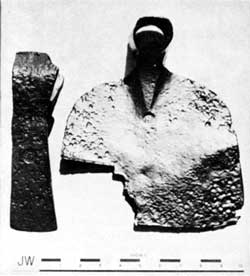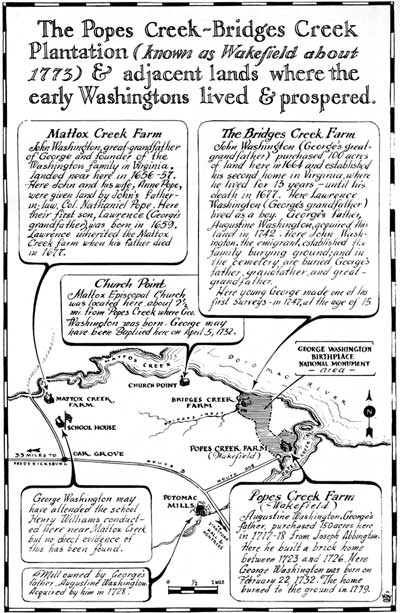|
GEORGE WASHINGTON BIRTHPLACE National Monument |
 |
Lawrence Washington
Lawrence Washington was 5 years old when his parents moved from Mattox Creek to the Bridges Creek plantation. Except for a few months when he may have attended grammar school in England, he lived at Bridges Creek until early manhood. He was 18 when his father, John Washington, died; being the eldest son, he inherited the largest share of the land. As he grew and matured, he became a man of means, culture, and ability, and during his short life-span of 39 years he was honored with the highest political offices which the citizens of Westmoreland County could bestow.
 Ax and hoe of the 17th century un earthed at Bridges Creek, near where John Washington lived, 1664—77. |
Following in his father's footsteps, he served as justice of the Court of Westmoreland County, as an officer in the county militia, and a member of the Virginia House of Burgesses. He was first elected to the latter office when only 25, serving four terms as a burgess in the Colonial Assembly at Jamestown. Another position he held for several years was sheriff of Westmoreland County.
In 1690 Lawrence married Mildred Warner of Gloucester County, Va., daughter of a prominent planter, Augustine Warner, who at one time had been speaker of the House of Burgesses and a member of the Governor's council. Their second son, Augustine, born in 1694, was destined to become the father of George Washington.
Lawrence Washington died in 1698, and was interred in the family cemetery at Bridges Creek. He left a sizeable estate to his wife and three children (his personal property alone consisted of £406 and 32,509 pounds of tobacco), and to each of the two Anglican churches in Washington Parish he provided for "a Pulpett Cloth & Cushion."

(click on image for an enlargement in a new window)

|
|
Last Modified: Mon, Jan 20 2003 10:00:00 pm PDT |


